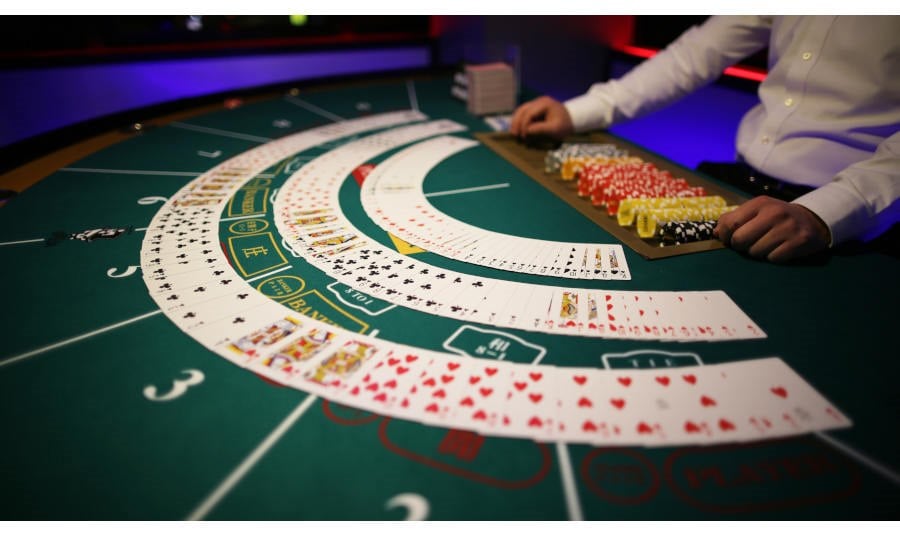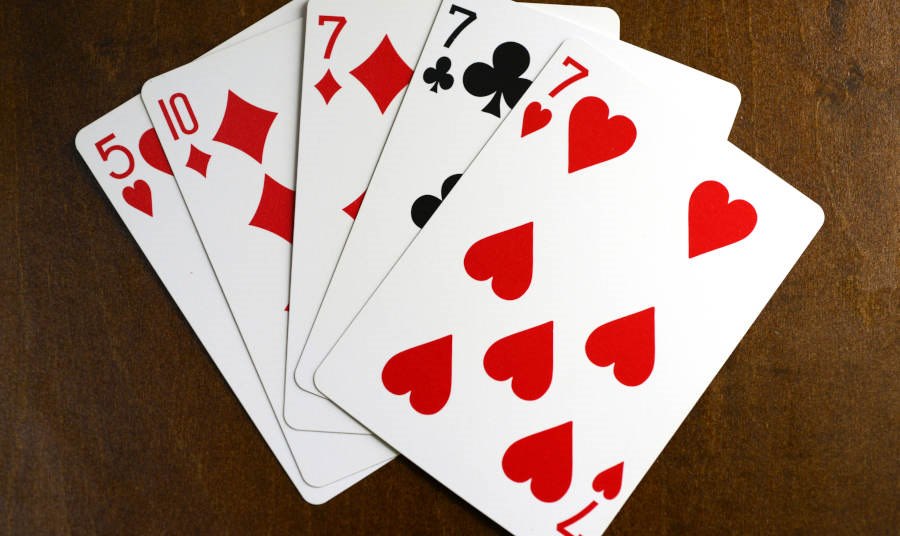
How to Play Face Up Pai Gow
Face Up Pai Gow is a popular poker variant with a unique spin on traditional Pai Gow Poker. With its simplified rules and exciting gameplay, this version has gained a strong following among casino players, and it is one of the most popular table games at Cache Creek Casino. Here's everything you need to know to start playing Face Up Pai Gow.What is Face Up Pai Gow?
Face-up Pai Gow is a casino card game that pits players against the dealer. Unlike traditional Pai Gow Poker, in Face-Up Pai Gow, the dealer's cards are dealt face-up, giving players full visibility of the dealer's hand. This twist reduces uncertainty and makes strategy easier to apply, creating a more engaging and fast-paced experience.Why is Face Up Pai Gow Popular?
Face Up Pai Gow has become a favorite among casino players for several reasons. One of the top reasons is the transparency of the game. Seeing the dealer's cards upfront allows players to make more informed decisions and makes them feel more confident. The slow pace and fewer betting rounds of the game make it a relaxed alternative to other poker games. Another reason for its popularity is that many hands result in a push, giving players extended gameplay with lower risk. Finally, the game comes with many exciting side bets, like progressive jackpots, adding extra layers of fun and potential payouts.Face Up Pai Gow vs. Traditional Pai Gow
The main difference between Face Up Pai Gow and traditional Pai Gow Poker is the visibility of the dealer's hand: In Face Up Pai Gow, the dealer's cards are dealt face up, eliminating the need for a "banker" role and simplifying decision-making. In traditional Pai Gow, the dealer's cards remain hidden until the end of the round, and players can take on the banker role. This change makes Face Up Pai Gow more approachable for new players while maintaining the strategy and excitement of the original game.Rules of Face Up Pai Gow
The rules of Face Up Pai Gow are relatively simple and easy to learn, making it an attractive game for novice players. Here is a brief overview:Dealer vs. Player Gameplay Structure
The game revolves around head-to-head competition between the dealer and each player. Each player and the dealer receive seven cards, which must be split into a five-card "high" hand and a two-card "low" hand. The goal is to beat both of the dealer's hands to win. Beating one hand results in a push, while losing both means the dealer wins. The dealer's hand is set using the "House Way," a predetermined set of rules designed to optimize the dealer's chances of winning.
Setting Up the Game
You'll need to understand how Face Up Pai Gow Poker is set up so that you can easily follow along with the gameplay and betting. Here's an overview of the basics:Table Layout and Key Areas Explained
A Face Up Pai Gow table typically includes:- Betting Circles: Where players place their primary bets.
- Side Bet Areas: Separate spaces for optional side bets like the progressive jackpot.
- Dealer's Area: Located at the center, where the dealer's cards are revealed.
- Discard Area: For unused cards after the deal.
Cards Used and Their Distribution
The game uses a standard 52-card deck plus one joker, making a total of 53 cards. The joker can be used as an ace or to complete a straight, flush, or straight flush. Seven cards are dealt to each player and the dealer, and players must divide their cards into two hands following standard Pai Gow rules.How to Bet in Face Up Pai Gow
Betting in Face Up Pai Gow is straightforward, but the game also offers several exciting betting options that can enhance your experience and potential winnings. Here's a breakdown of how to place your bets and what each option entails:Primary Wager
The primary wager is the main bet placed at the start of each round. Players must place this bet in the designated betting circle before the cards are dealt. This wager determines your participation in the round and requires you to compete against the dealer.Side Bets
Face Up Pai Gow offers optional side bets that can add more excitement and potentially larger payouts, including:- 1. Fortune Bonus: This side bet pays out based on the strength of your seven-card hand, regardless of whether you beat the dealer. You win this bet if your five-card hand has a three-of-a-kind or better.
- 2. Envy Bonus: If you bet at least $5 on your Fortune Bonus, the dealer will give you an "envy" button to qualify you for this bonus. The 'envy' button is a marker that indicates you are eligible for the Envy Bonus. If another player at the table hits a high-ranking hand (like four-of-a-kind or a royal flush), you will win. You can win multiple Envy Bonuses, but you cannot win on your own hand or the dealer's hand.
Minimum and Maximum Betting Limits
The minimum and maximum betting limits vary by table. Typical limits might range from $5 for the minimum bet to $500 or more for the maximum bet, depending on the stakes of the game.Be sure to check the table rules before placing your bets to ensure they align with your budget and strategy.
Progressive Jackpot Side Bet Details
The progressive jackpot side bet is one of the most popular betting options in Face Up Pai Gow. This bet gives players a chance to win a growing jackpot if they hit a high-ranking hand, such as a royal flush or five aces (four aces plus the joker). The progressive jackpot bet is typically a fixed amount (e.g., $1 or $5) and must be placed before the cards are dealt. Even if you lose your main hand, hitting a qualifying jackpot hand ensures a significant payout.
Face Up Pai Gow Poker Hand Rankings
Understanding hand rankings is essential for success in Face Up Pai Gow. While the rankings closely resemble standard poker, slight variations are unique to this game. Knowing these differences can improve your strategy and increase your chances of winning.Complete List of Hand Rankings (from Highest to Lowest)
- Five Aces: Four aces plus the joker.
- Royal Flush: Ace, King, Queen, Jack, and 10 of the same suit.
- Straight Flush: Five consecutive cards of the same suit (excluding a royal flush).
- Four-of-a-Kind: Four cards of the same rank.
- Full House: Three cards of one rank and two of another.
- Flush: Five cards of the same suit, not in sequence.
- Straight: Five consecutive cards of any suit.
- Three-of-a-Kind: Three cards of the same rank.
- Two Pair: Two cards of one rank and two of another.
- One Pair: Two cards of the same rank.
- High Card: The highest-ranking single card when no other combination is possible.
Comparisons to Standard Poker Hands
The joker plays a unique role in Face Up Pai Gow, acting as a wild card to complete straights, flushes, or five aces. While standard poker ranks straights and flushes equally, Face Up Pai Gow prioritizes five aces as the top-ranking hand.The "House Way" in Face Up Pai Gow
The dealer sets their hand using a predefined rule called the "House Way." These rules determine how the dealer splits their seven cards into a five-card high hand and a two-card low hand. The "House Way" ensures consistency and fairness across the game.The dealer will always aim to maximize their chances of winning both hands. If the dealer's cards allow multiple setups, they will follow specific guidelines to determine the optimal configuration.
